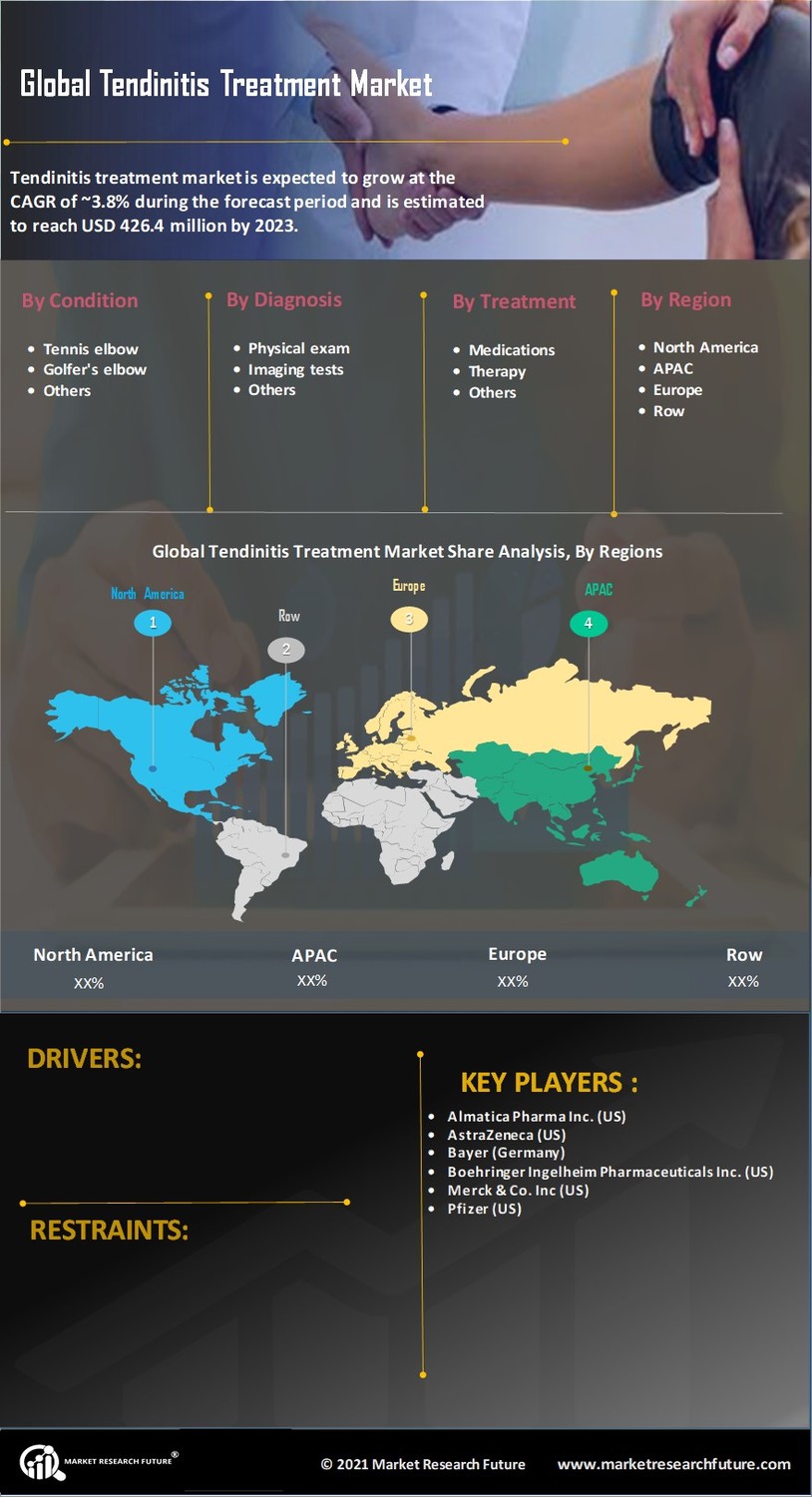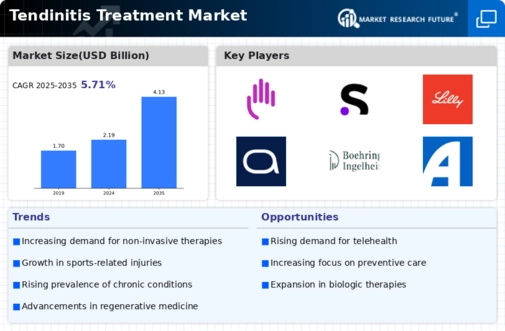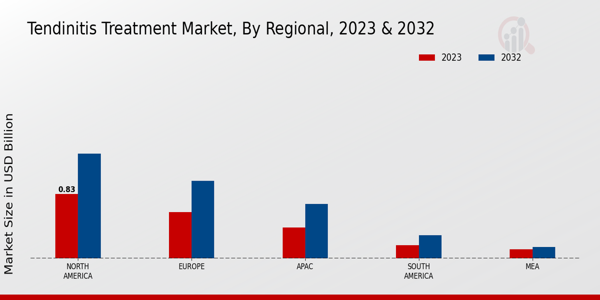Market Growth Projections
The Global Tendinitis Treatment Market Industry is poised for substantial growth, with projections indicating a rise from 2.19 USD Billion in 2024 to 4.13 USD Billion by 2035. This growth trajectory suggests a compound annual growth rate of 5.96% from 2025 to 2035. Factors contributing to this expansion include the rising prevalence of tendinitis, advancements in treatment modalities, and increased healthcare expenditure. As the market evolves, stakeholders are likely to focus on innovative solutions and improved patient care, positioning themselves to capitalize on the growing demand for effective tendinitis treatments.
Integration of Telemedicine
The integration of telemedicine into healthcare services is emerging as a significant driver for the Global Tendinitis Treatment Market Industry. Telehealth platforms facilitate remote consultations and follow-ups, making it easier for patients to access care for tendinitis. This trend has been accelerated by technological advancements and changing patient preferences for convenience. The ability to receive timely treatment and advice through telemedicine may enhance patient adherence to treatment plans, thereby improving outcomes. As telehealth continues to evolve, it is likely to play a crucial role in expanding the market and improving access to care.
Growing Awareness and Education
The increasing awareness and education surrounding tendinitis and its treatment options are pivotal in shaping the Global Tendinitis Treatment Market Industry. Campaigns aimed at educating the public about the symptoms and management of tendinitis are gaining momentum. Organizations such as the American Academy of Orthopaedic Surgeons provide resources to help patients understand their conditions better. This heightened awareness is likely to lead to earlier diagnosis and treatment, ultimately driving market growth. As more individuals seek treatment, the demand for effective solutions is expected to rise, contributing to the overall market expansion.
Rising Prevalence of Tendinitis
The increasing incidence of tendinitis globally is a primary driver for the Global Tendinitis Treatment Market Industry. Factors such as aging populations and sedentary lifestyles contribute to this rise. For instance, the World Health Organization indicates that musculoskeletal disorders, including tendinitis, are prevalent among older adults. This demographic shift is expected to escalate the demand for effective treatment options, with the market projected to reach 2.19 USD Billion in 2024. As awareness of tendinitis grows, healthcare systems are likely to prioritize treatment strategies, further propelling market expansion.
Increased Healthcare Expenditure
Rising healthcare expenditure across various regions is a crucial factor driving the Global Tendinitis Treatment Market Industry. Governments and private sectors are investing more in healthcare infrastructure and services, leading to improved access to treatment options for tendinitis. According to the Centers for Medicare & Medicaid Services, healthcare spending in the United States is expected to grow significantly in the coming years. This trend is likely to facilitate the adoption of advanced treatment modalities, thereby expanding the market. The projected compound annual growth rate of 5.96% from 2025 to 2035 reflects the positive outlook for the industry.
Advancements in Treatment Modalities
Innovations in treatment modalities for tendinitis are significantly influencing the Global Tendinitis Treatment Market Industry. The development of minimally invasive procedures, regenerative medicine, and biologic therapies offers new avenues for effective management of tendinitis. For example, platelet-rich plasma (PRP) therapy has gained traction as a promising treatment option. These advancements not only enhance patient outcomes but also stimulate market growth, as healthcare providers seek to adopt the latest technologies. The anticipated growth in the market, projected to reach 4.13 USD Billion by 2035, underscores the importance of these innovations.












